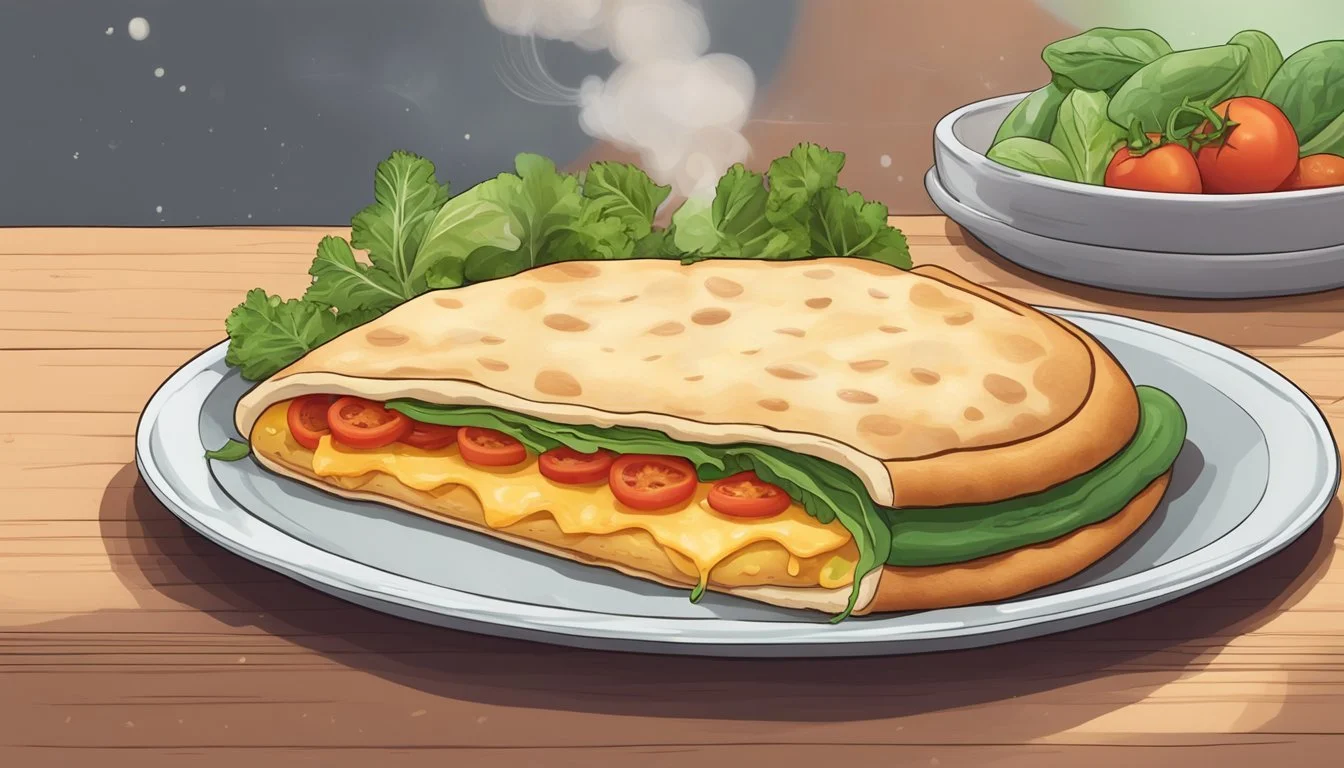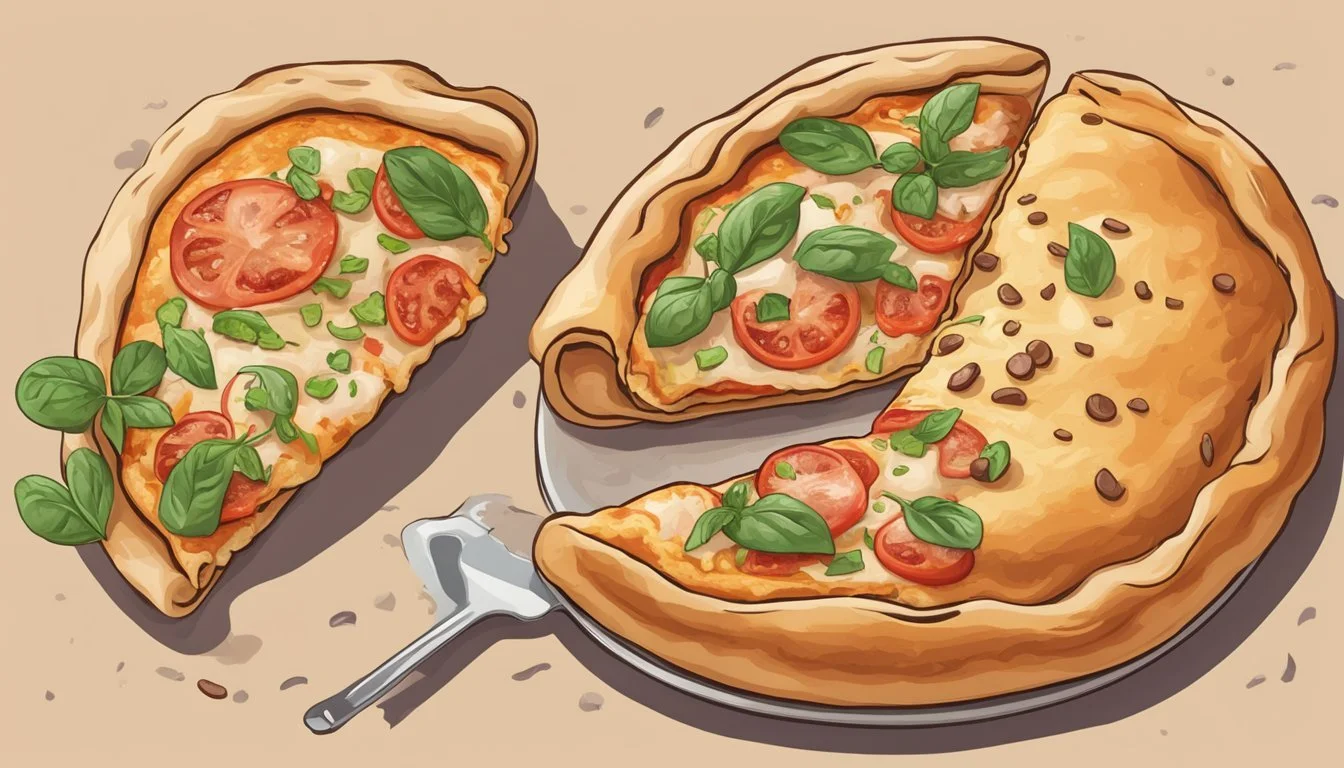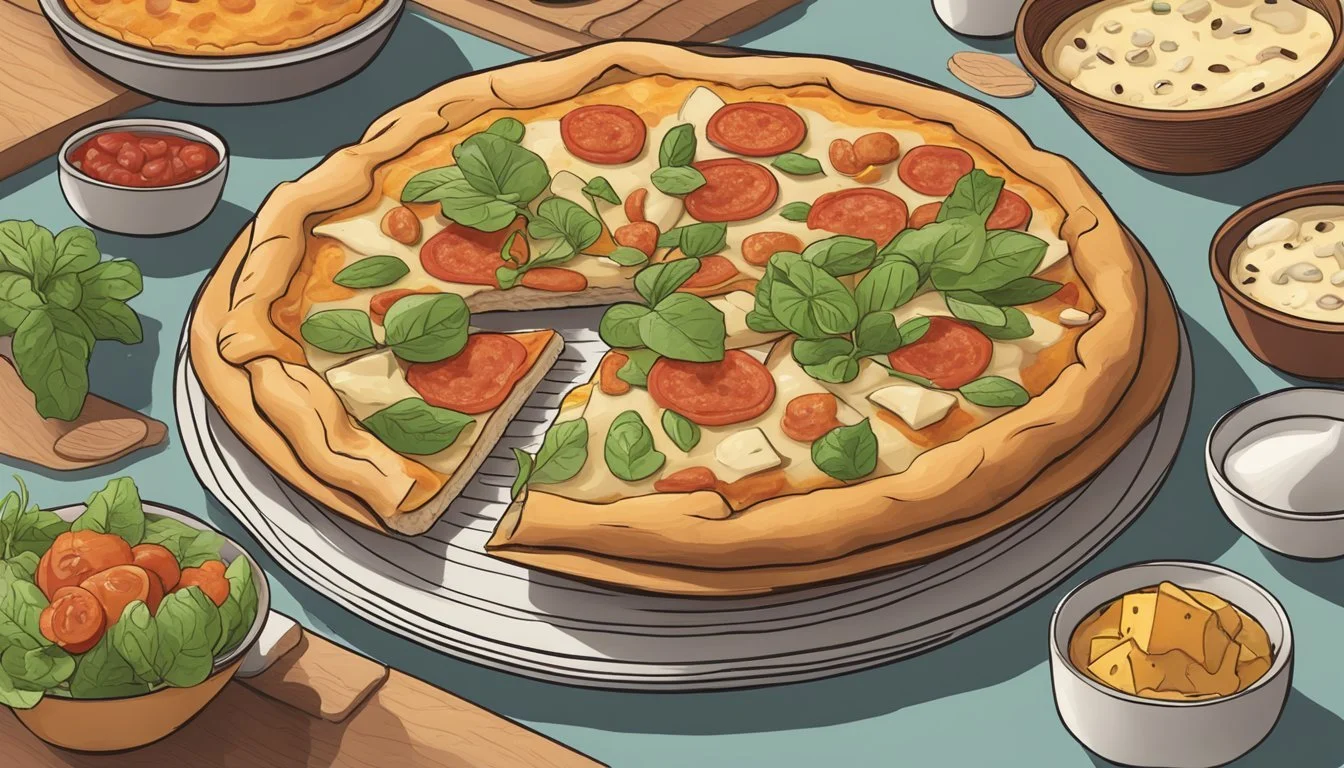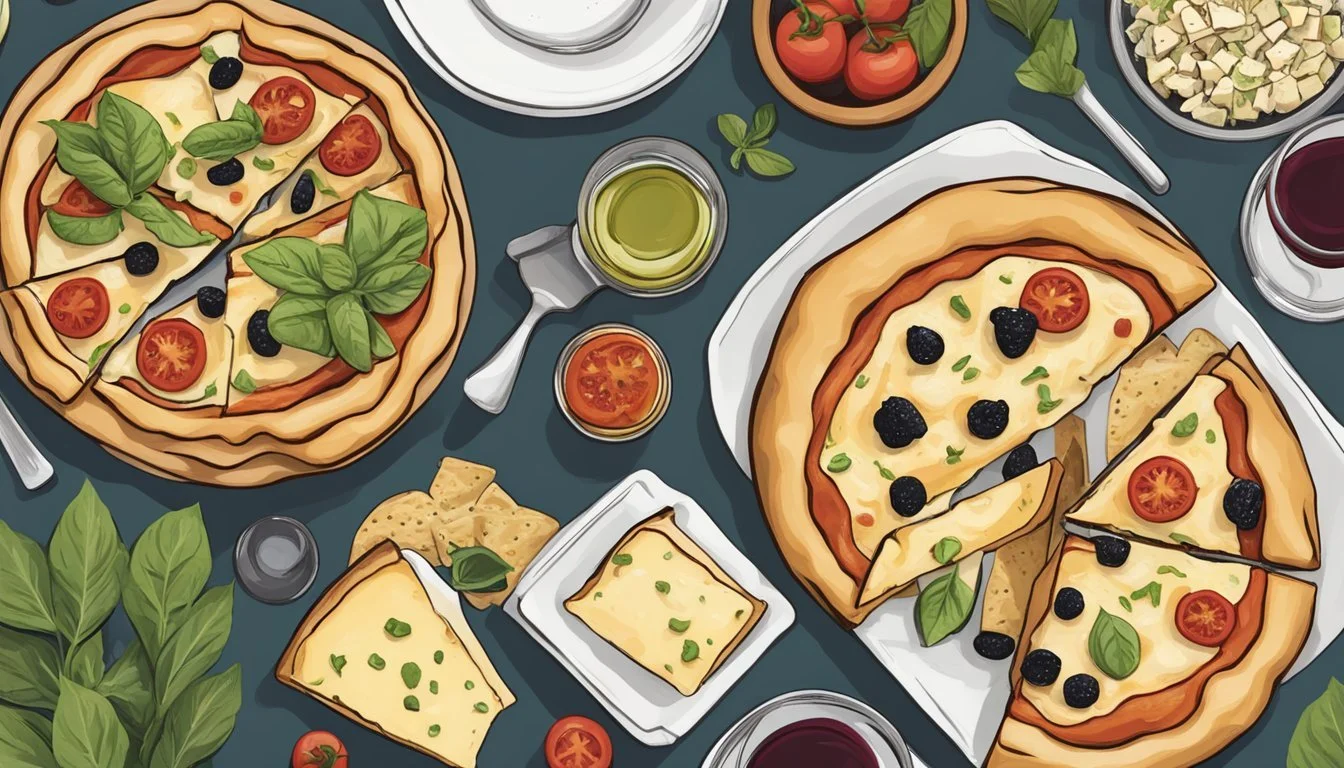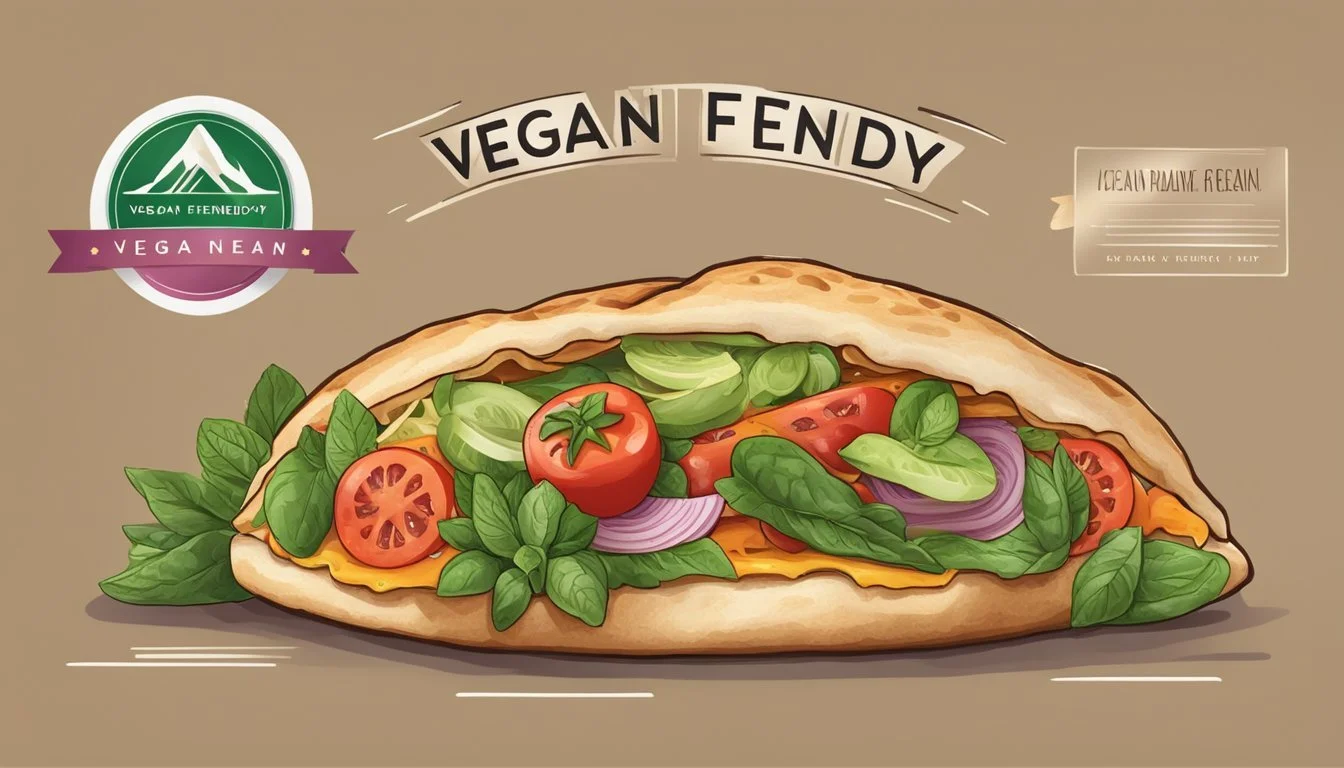Is Calzone Pizza Vegan?
Understanding the Ingredients and Options
A calzone is a type of Italian folded pizza, (What wine goes well with pizza?) traditionally made with ingredients similar to pizza, such as cheese, tomato sauce, and various meats encased in a doughy exterior. Whether a calzone is vegan depends on the specific ingredients used in its preparation. The typical calzone dough, consisting of flour, water, yeast, and salt, is inherently vegan, while classic fillings like cheese and meat are not. However, with the growing popularity of plant-based diets, vegan calzones have become more commonplace in restaurants and home kitchens alike.
Vegan calzones substitute animal-based cheeses and meats with plant-based alternatives such as vegan cheese and a variety of vegetables or meat analogues made from soy, wheat, or other plant proteins. These ingredients are enveloped in the same basic vegan dough and then baked to achieve a golden-brown crust. The adaptability of the calzone format makes it an inviting option for those who follow a vegan lifestyle, as virtually any preferred combination of vegan fillings can be used to customize the dish to individual tastes.
For those seeking to enjoy this Italian favorite without animal products, several recipes online provide guidance on how to create a vegan calzone. These recipes often include a range of vegetables like bell peppers, onions, and olives, as well as plant-based cheeses and meat substitutes. Additionally, some recipes may incorporate cashew ricotta or a vegan cream sauce to mimic the creamy texture typically provided by dairy-based cheeses. With these modifications, a calzone can easily be made vegan while still delivering the heartiness and flavor that is characteristic of the traditional dish.
Understanding Calzones and Pizza
When exploring the realm of Italian cuisine, particularly offerings for dinner or the main course, calzones and pizza stand out as popular choices. Both have a storied history and an array of recipes that speak to their versatility. It is important to understand these two distinct, yet related, staples.
Defining Calzone
A calzone is an Italian dish that can be described as a folded pizza. The dough is traditionally shaped into a half-moon and filled with various ingredients such as cheeses, meats, and vegetables. Once folded, it is sealed and baked. Unlike pizza, it encloses its toppings, creating a pocket that is ideal for a portable meal or a main course.
Defining Pizza
Pizza is a well-known dish that originated from Italy and has become beloved worldwide. It consists of a round, flat base of leavened wheat-based dough topped with tomatoes, cheese, and often various other ingredients, which is then baked at a high temperature, traditionally in a wood-fired oven.
Calzone vs. Pizza
Feature Calzone Pizza Shape Half-moon, enclosed Round, open-faced Toppings Inside the dough pocket On top of the dough Sauce Often served on the side for dipping Spread on the dough before baking Eating Method Often eaten by hand, less messy Commonly eaten by hand or with utensils Historical Use Portable option for workers Served as a meal for gatherings
While the calzone and pizza share similar dough and ingredients, a calzone's sealed edges and filling differentiate it from the open-faced, typically larger pizza. Each serves as a warm, gratifying main course, with the dough acting as a vessel for an array of savory ingredients. Despite these variations, both dishes highlight the essence of Italian cuisine.
Veganism and Dairy Alternatives
In exploring vegan options for traditionally dairy-laden dishes like calzone pizza, understanding the fundamentals of veganism and the range of dairy substitutes available is essential. This section precisely details veganism's core principles, highlights dairy-free alternatives used in vegan cooking, and explores the variety of vegan cheese options in the market.
Basics of Veganism
Veganism is a lifestyle choice that excludes all animal products and by-products. This means that individuals following a vegan diet do not consume meat, dairy, eggs, and honey. Veganism extends beyond diet, often influencing one's choices in clothing, cosmetics, and other consumer goods. In culinary terms, it necessitates the use of plant-based ingredients and the avoidance of food items derived from animals.
Dairy Substitutes in Vegan Cuisine
Dairy substitutes play a vital role in vegan cuisine, enabling vegans to enjoy a wide range of dishes without compromising on ethics or taste. Key ingredients that replicate the creamy texture and flavor of dairy include:
Nut milks and creams: Made from almonds, cashews, and coconut, these are popular for their versatility.
Soy products: Soy milk and tofu are staples for their protein content and adaptability.
Oat and rice milks: Known for their mild taste, suitable for sweet and savory dishes.
Plant-based oils: Olive oil is particularly favored for its heart-healthy properties, and it can be used as a butter substitute in many recipes.
Vegan Cheese Options
The development of vegan cheese has revolutionized vegan cuisine, offering a variety of flavors and textures that mirror traditional cheese. Vegan cheese is primarily made from nuts, such as cashews and almonds, soy, and root vegetables. It can range from soft and spreadable to hard and sliceable. Vegan cheeses are now more accessible than ever, and they come in several forms:
Shreds and slices: Convenient for melting on pizzas and calzones.
Blocks and wheels: Ideal for slicing and enjoying with crackers or in sandwiches.
Soft cheeses: Such as vegan ricotta or cream cheese, suitable for fillings and spreads.
Fermented and aged cheeses (What wine goes well with aged cheeses?): Offering complex flavors for the discerning palate.
By incorporating these dairy-free alternatives, chefs and home cooks can create satisfying vegan versions of a calzone that maintain the dish's signature textures and flavors without the use of animal products.
Calzone Ingredients and Preparation
Calzone is a folded Italian pizza which traditionally features dough stuffed with cheese, meats, and vegetables. To make a calzone vegan, one must replace dairy and meat with plant-based alternatives without compromising taste and texture.
Traditional Ingredients
Traditional calzone ingredients often include all-purpose flour, olive oil, salt, and water for the dough, with a variety of fillings like cheese, cured meats, and vegetables such as spinach and mushrooms. Typically, tomato sauce is used either as a layer within the calzone or as a dip.
Vegan Ingredient Substitutes
For a vegan calzone, traditional cheese and meat are substituted with vegan cheeses—often made from nuts or soy—and plant-based meats. Olive oil remains a great vegan-friendly option for both the dough and for sautéing vegetables. Additionally, vegetables like bell pepper, onions, additional spinach, and mushrooms can enhance the flavor profile.
Preparing the Vegan Calzone Dough
To prepare the vegan dough, one must combine:
1 cup lukewarm water
2 teaspoons granulated sugar — to activate the yeast
1 tablespoon active dry yeast
After mixing these, allow the mixture to sit until the yeast is foamy, usually about 5-10 minutes. Following this, incorporate all-purpose flour and salt to create a pliable, non-sticky dough. Knead until elastic.
Assembling a Vegan Calzone
Begin by rolling out the dough and cutting it into pieces. Spread a base of tomato sauce on each, leaving space at the edges. Lay down a mixture of sautéed vegetables, such as spinach and peppers, and vegan cheese. Fold the dough over to create a half-moon shape and pinch the edges to seal. Brush the top with olive oil and bake until golden brown.
Cooking Techniques for Vegan Calzones
When preparing vegan calzones, mastering the baking process is essential to achieving a golden and crispy crust with a flavorful, well-cooked filling. Understanding the various cooking methods and the importance of time and temperature control will ensure delicious results.
Baking Vegan Calzones
To bake vegan calzones, one should begin by preheating the oven. A pizza stone or cast iron pizza pan is often heated within the oven to create an evenly baked crust. Use parchment paper to avoid sticking. The calzones should be placed on the preheated stone or pan and baked until the crust is golden brown. Here's a simple guide:
Preheat the oven (typically to about 425-480°F, depending on recipe).
If using a pizza stone, place it in the oven during preheating.
Prepare calzones and place them on parchment paper for easy transfer.
Bake until golden brown, which usually takes about 15-20 minutes.
Alternative Cooking Methods
Besides an oven, one can also use a toaster oven as an alternative baking option, which follows a similar process but on a smaller scale. Additionally, for those wanting to reheat previously cooked calzones, a microwave can be utilized, although it may not maintain the crust's crispiness as effectively as an oven would.
Cook Time and Temperature
The cook time and temperature play crucial roles in creating the perfect vegan calzone. A high temperature, generally between 425-480°F, is optimal for a crispy crust. The typical cook time ranges from 15-20 minutes but always check periodically as ovens vary. Below is a quick reference:
Temperature (°F) Cook Time (Minutes) 425 15-20 450 12-18 480 10-15
Note: Always ensure the oven is fully preheated before baking calzones to guarantee an even cooking process.
Serving and Pairing
After preparing a vegan calzone, the experience is further uplifted by how it’s served and what it’s paired with. Presentation and complementary flavors can make a satisfying meal truly remarkable.
How to Serve Vegan Calzones
Vegan calzones are typically served hot, with a crisp exterior and a hearty, steamy filling. Cutting them in half just before serving allows the steam to escape and makes them easier to eat. Serving on a warm plate can help maintain the calzone's temperature.
Accompaniments and Dipping Sauces
A variety of dipping sauces can elevate the flavors of vegan calzones. Here are a few popular options:
Marinara Sauce: A classic choice, rich in tomato flavor complementing the calzone fillings.
Cashew Cheese Sauce: Creamy and rich, adding a savory note to each bite.
Herb-infused Olive Oil: Simple yet flavorful, ideal for enhancing the crust.
Additionally, a side salad with a tangy vinaigrette balances the richness of the calzone and adds a crisp texture contrast.
Wine Pairing
Pairing wine with a vegan calzone can add sophistication to the meal. Considering the calzone filling, here are suitable wine options:
Light fillings (e.g., vegetables): A crisp Pinot Grigio or Sauvignon Blanc can complement the freshness of the ingredients.
Hearty fillings (e.g., faux meats, rich sauces): A robust Chianti or Merlot can stand up to the stronger flavors.
Health and Dietary Considerations
When considering vegan calzone pizza, it's important to evaluate the nutritional profile, potential allergens, and how to adapt it for those with gluten sensitivities. A vegan calzone fills dietary preferences while maintaining a balance of taste and health.
Nutritional Information
Calzone pizza can be part of a healthy vegan diet if prepared thoughtfully. The fillings typically comprise a variety of vegetables that offer essential vitamins and minerals, while vegan cheese can provide plant-based fats and protein. However, the caloric content may vary depending on the ingredients and size of the calzone. For instance, dough made with white flour is higher in calories and lower in fiber compared to whole wheat options.
Typical Vegan Calzone Nutritional Profile (per serving):
Calories: Varies (typically 400-800 kcal)
Protein: Based on vegan cheese and veggies used
Carbohydrates: Primarily from flour dough
Fats: Healthy fats from vegan cheese and possible added oils
Allergen Information
Vegan calzones may contain common allergens such as gluten, soy, nuts (in certain vegan cheeses), or yeast. Consumers with allergen sensitivities should check ingredient labels thoroughly or inquire about substitute options.
Common Allergens in Vegan Calzones:
Gluten: Found in wheat-based dough.
Soy: Often present in vegan cheeses and meat substitutes.
Tree Nuts: Some vegan cheese products may use cashews or almonds.
Adapting for Gluten Sensitivity
For those sensitive to gluten, a vegan calzone can be adapted using gluten-free flour blends, which often incorporate rice or tapioca flour. It is crucial to ensure that all additional toppings and fillings, including vegan cheese, are certified gluten-free to prevent cross-contamination.
Gluten-Free Dough Substitute Options:
Gluten-free all-purpose flour blend
Almond flour (note potential allergen)
Chickpea flour for a protein-rich alternative
Recipe Variations and Tips
Creating vegan calzones is both an art and a science, with opportunities to customize fillings and dough to personal preference. This section offers guidance on selecting the ideal fillings for vegan calzones and deciding between homemade and store-bought dough, providing the tips necessary for a delicious plant-based meal.
Vegan Calzone Fillings
The fillings for a vegan calzone can be a colorful palette of vegetables, vegan cheeses, and meat substitutes. A classic combination might include:
Vegetables: Onions, peppers, artichokes, and zucchini, which should be cooked until just tender before being added to the calzone.
Cheese: Use vegan cheese shreds or soft cashew cheese to give the melty texture reminiscent of traditional calzone.
Meat Substitutes: Vegan pepperoni or sausage can be added for a hearty bite.
For added flavor, consider including:
Olives or capers (What wine goes well with capers?) for a briny kick
Fresh basil or spinach for a bright, herbal note
Sun-dried tomatoes or roasted red peppers for a touch of sweetness and smoky flavor
A pro tip: sautéing the vegetables before filling the dough enhances their flavors and removes excess moisture that could make the dough soggy.
Homemade vs. Store-bought Dough
When it comes to the base of a calzone, the dough is key. Here are considerations for both homemade and store-bought options:
Homemade Vegan Pizza Dough:
Control: Making your own dough allows control over the ingredients and the final texture.
Time: It takes longer, usually involving a mix of flour, water, yeast, sugar, and salt, with sufficient time for rising.
Store-bought Dough:
Convenience: Saves time and effort, and comes in handy for last-minute meal prepping.
Varieties: Available in whole wheat, gluten-free, and traditional white flour options.
Whether opting for a dough from scratch or a store-bought variety, ensure it’s vegan by checking for honey, dairy, or eggs, which are sometimes present in pre-made doughs. Preheat the oven—typically to around 425-480 degrees Fahrenheit—to achieve a crispy and golden crust.
Food Storage and Reheating
Properly storing and reheating vegan calzones ensures they retain their texture and flavor. This section outlines the best practices for keeping leftovers fresh, freezing and thawing, as well as reheating options for optimal taste.
Storing Leftovers
To store leftover vegan calzones, they should be kept in the refrigerator within two hours of serving. Place the calzones in an airtight container or wrap them tightly in aluminum foil or plastic wrap. They will maintain their quality in the refrigerator for 3 to 5 days.
Freezing and Thawing
For longer storage, vegan calzones can be frozen. To freeze, first allow them to cool completely to prevent ice crystals from forming. Wrap each calzone individually in plastic wrap and then place them in a freezer bag or an airtight container. Vegan calzones can be stored in the freezer for up to 3 months. To thaw, place them in the refrigerator overnight; this method prevents the dough from becoming soggy.
Reheating Options
When reheating vegan calzones, the goal is to restore the crust's crispness while warming the fillings. Preheat the oven to 350 degrees Fahrenheit and place calzones directly on the rack or on a baking sheet. Heat for about 10-15 minutes or until heated through. For a quicker option, a microwave can be used, although it may not preserve the crust's texture as well. Microwaving on a medium power setting in 30-second intervals until warmed through is recommended to prevent the dough from becoming too tough.
Cooking Resources and Equipment
When creating vegan calzones, having the right tools and ingredients is crucial for achieving the best results. A well-equipped kitchen and a source for high-quality vegan ingredients will contribute significantly to the success of the dish.
Recommended Kitchen Tools
Baking tray: A quality non-stick baking tray is essential for an even bake.
Pizza cutter: A sharp pizza cutter will ensure clean cuts without disturbing the filling.
Mixing bowls: Various sizes for preparing dough and fillings.
Rolling pin: To roll the calzone dough to the desired thickness.
Kitchen scale: For precise ingredient measurements.
Measuring spoons and cups: Essential for accurate measurements of smaller ingredients.
Pro tip: When purchasing through affiliate links from recommended products, customers can often support content creators at no additional cost to themselves. Always look for options that mention "qualifying purchases" to ensure a portion of the sale supports your favorite recipe developers.
Where to Find Specialty Ingredients
Local health food stores: Often stock a variety of vegan substitutes and specialty ingredients.
Online retailers: Convenient for finding specific ingredients such as vegan cheese or meat substitutes.
Farmers' markets: A good source for fresh, local produce that can elevate the flavor of your calzones.
Ethnic grocery stores: Can provide unique ingredients that add authentic flavors.
Tip: When searching for ingredients, consider organic and non-GMO options when available to ensure the quality and sustainability of your vegan calzone.

